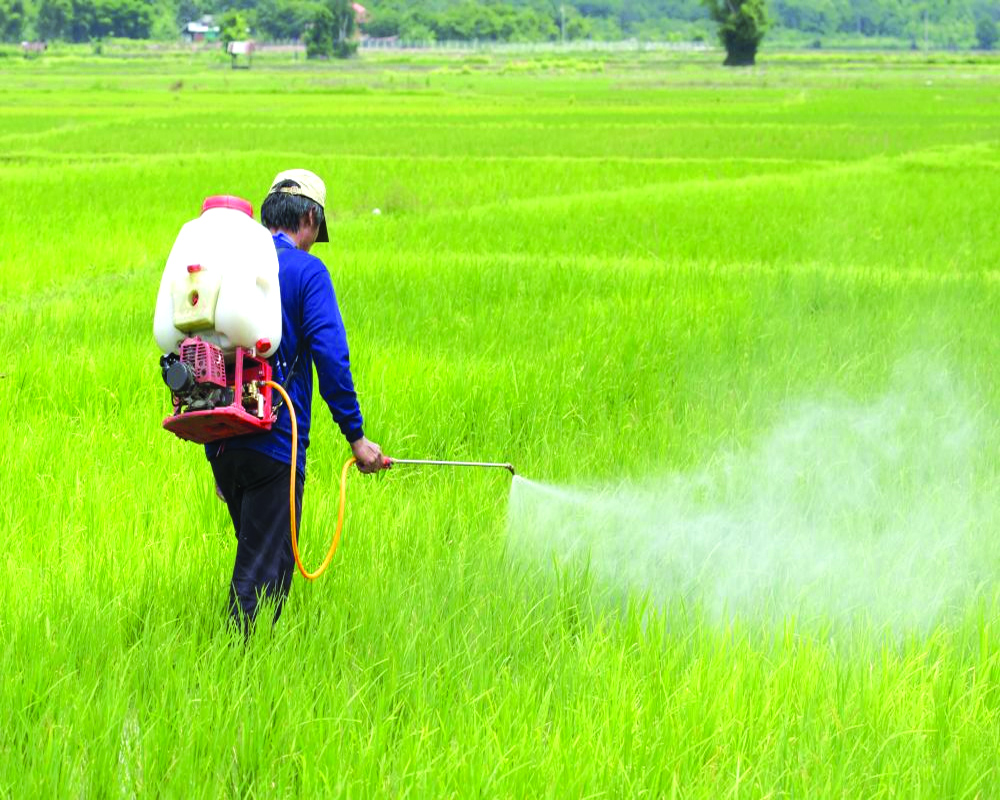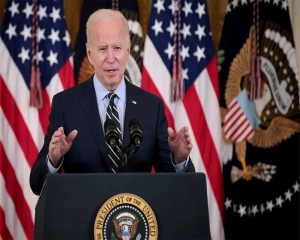Nano fertilisers can yield better results but they can’t perform miracles. For a substantial reduction in subsidy, the Govt must implement agri reforms
On April 26, 2023, Union Minister for Home and Cooperatives Amit Shah launched liquid nano-diammonium phosphate (nano-DAP) developed by the Nano Biotechnology Research Centre (NBRC) (Kalol) of Indian Farmers Fertiliser Cooperative (IFFCO). During the current fiscal, IFFCO plans to produce 50 million bottles (500 ml) of nano-DAP which will be scaled up to 180 million bottles by 2025-26. According to US Awasthi, Managing Director of IFFCO, by then imports of DAP might not be required; currently, India imports over 50 percent of its DAP requirement.
Earlier, on October 17, 2022, Prime Minister Narendra Modi launched liquid nano urea also developed by NBRC. IFFCO started its production on August 1, 2021, and produced 29 million bottles (500 ml) till March 31, 2022. The central government has also roped in public sector undertakings (PSUs) such as Rashtriya Chemicals and Fertilisers Ltd (RCF) to make it. During 2022-23, the total production of nano-urea was 50 million bottles of which IFFCO produced 27.5 million.
According to the Union Minister for Chemicals and Fertilisers Mansukh Mandaviya by 2024-25, India will be producing around 440 million bottles of nano urea and after 2025 India need not import urea as domestic production of conventional and nano liquid urea could be sufficient to meet domestic demand.
Urea imports decreased from 9.83 million tons in 2020-21 to 9.13 million tons during 2021-22 and further down to 7.48 million tons during 2022-23. Whether or not these can be brought down to zero by 2025, we can only wait and watch. As for DAP, these are early days as production has just started.
A tantalizing claim refers to the possibility of nano-fertilisers enabling the complete elimination of fertiliser subsidies. For a better understanding, let us look at some basics.
To make fertilisers affordable to farmers, the Centre controls the maximum retail price (MRP) of urea at a low level unrelated to the cost of production and distribution, which is higher. The excess cost over MRP is reimbursed to the manufacturer as a subsidy, which varies from unit to unit depending on its cost. For non-urea fertilisers, it fixes ‘uniform’ subsidies on a per-nutrient basis for all manufacturers and importers. Subsidy on every ton of fertilizer produced and sold multiplied by the total tonnage gives the total subsidy paid from the Union Budget.
Fertilizer subsidy went up from an already high of Rs 162,000 crore during 2021-22 to Rs 253,000 crore during 2022-23. The budget estimate (BE) for 2023-24 is Rs 179,000 crore (this reduced allocation is no consolation as invariably, the actual payment turns out to be higher than the BE; for instance, during 2022-23 the actual was more than double the BE of Rs 105,000 crore).
Nano urea is urea in the form of a nanoparticle containing nitrogen particles of 20–50 nanometres in size. It provides nitrogen to plants in liquid form as an alternative to conventional urea. A 500ml bottle of nano urea is equivalent to a 45kg bag of conventional urea. While the former is available to farmers for Rs 240 without any subsidy support, to supply the latter at the same price, the government has to give a subsidy of Rs 2410. If all of the conventional urea is replaced by nano–urea, the urea subsidy can be brought down to zero.
Likewise, nano–DAP provides nitrogen and phosphate nutrients to plants in liquid form as an alternative to conventional DAP. A 500-ml bottle of nano-DAP is equivalent to a 50-kg bag of conventional DAP. While the former is available to farmers for Rs 600 without any subsidy support, the latter is made available at more than double this price or Rs 1,350 and that too with the government giving a subsidy of Rs 2650. If all conventional DAP is replaced by nano–DAP, DAP subsidy can be brought down to zero. Additionally, farmers will need to pay half of what they currently pay.
If a similar outcome is possible in the case of a third major fertilizer viz. muriate of potash (MoP) (currently IFFCO is working on nano-Potash as well besides micronutrients such as nano-Zinc, nano-Boron, etc), overall the government could save on the entire gargantuan payout on fertilizer subsidy. It seems to be too good to believe. There is something amiss. Take the case of urea. The basic material for making nano urea is none other than conventional urea. The former contains by weight 85 to 99.98 per cent of the latter, 0.01 to 5 per cent of quinhydrone, and 0.01 to 10 per cent of calcium cyanamide. The upper end of the range is 99.98 per cent, almost the entire raw material (even at the lower end 85 per cent, it is overwhelming) for making nano urea is conventional urea.
Then, how can the cost of producing the former at Rs 240 be a tiny fraction of the latter’s cost at Rs 2650? This could be possible if only nano urea is mammoth times more efficient than conventional urea. To unravel this, let us look at the equivalence ratio between the two.
A 45kg bag of conventional urea contains 46 per cent nitrogen (N) nutrient or 20 kg (45×0.46), whereas a 500ml bottle of nano urea has 4 per cent ‘N’ or 20 grams (500x.04). In other words, urea in nano form with a mere 20 grams can achieve what conventional urea does with 20 kilograms. The former is 1000 times more efficient than the latter. If agriculture experts can demonstrate, this indeed is the case then India could be heading for a revolutionary transformation with zero fertilizer subsidy budget. But, that is daydreaming.
The innovator (read: IFFCO/ NBRC) also claims the efficiency of nano urea is over 80 per cent against around 40 per cent for conventional stuff. Furthermore, nano urea increases crop yield by 3-16 per cent. Its use causes less soil, water and air pollution. These claims don’t take us into a land of fantasy though the claim with efficiency gain is somewhat inflated.
Normally, urea is applied in two dosages: one, basal application being even spreading of solid fertilisers over the entire field before or at sowing or planting; two, top dressing which involves applying fertiliser directly to the leaves as opposed to in the soil. Nano urea is meant to replace conventional urea only in top dressing even as basal application is entirely in solid form.
This means that the benefit of 80 per cent efficiency (albeit of nano urea) will be available only on 50 per cent of the total quantity of fertiliser applied. Hence, the achievable effective efficiency would be 60 per cent (80×0.5 + 40×0.5). In other words, the efficiency gain with the use of nano urea would be only 20 per cent instead of 40 per cent as revealed by a plain reading of numbers.
This together with a yield increase of 3-16 per cent puts nano–urea in a vantage position; the same when used in conjunction with conventional urea will give promising results. Likewise, the substitution of conventional DAP by nano–DAP (according to Shah, replacement of up to 20 per cent in crops such as sugarcane and wheat is possible) can deliver gains in efficiency of use and increase in yield.
To conclude, nano fertilizers can yield better results but they can’t perform miracles. For a ‘substantial’ and ‘sustainable’ reduction in subsidy, the government should implement long-pending reforms such as the removal of all controls on fertilisers and direct benefit transfer (DBT) of subsidy to farmers.
(The writer is a policy analyst)


























